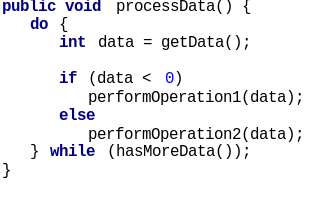
Smalltalk is a purely object oriented programming language (OOP) that was originally created in the 1970s for educational use, specifically for constructionist learning, but later found use in business. It was created at Xerox PARC by Learning Research Group (LRG) scientists, including Alan Kay, Dan Ingalls, Adele Goldberg, Ted Kaehler, Diana Merry, and Scott Wallace.

A web server is computer software and underlying hardware that accepts requests via HTTP or its secure variant HTTPS. A user agent, commonly a web browser or web crawler, initiates communication by making a request for a web page or other resource using HTTP, and the server responds with the content of that resource or an error message. A web server can also accept and store resources sent from the user agent if configured to do so.
In computing and computer programming, exception handling is the process of responding to the occurrence of exceptions – anomalous or exceptional conditions requiring special processing – during the execution of a program. In general, an exception breaks the normal flow of execution and executes a pre-registered exception handler; the details of how this is done depend on whether it is a hardware or software exception and how the software exception is implemented.
Defensive programming is a form of defensive design intended to develop programs that are capable of detecting potential security abnormalities and make predetermined responses. It ensures the continuing function of a piece of software under unforeseen circumstances. Defensive programming practices are often used where high availability, safety, or security is needed.
Test-driven development (TDD) is a software development process relying on software requirements being converted to test cases before software is fully developed, and tracking all software development by repeatedly testing the software against all test cases. This is as opposed to software being developed first and test cases created later.
In computing, a stack trace is a report of the active stack frames at a certain point in time during the execution of a program. When a program is run, memory is often dynamically allocated in two places: the stack and the heap. Memory is continuously allocated on a stack but not on a heap, thus reflective of their names. Stack also refers to a programming construct, thus to differentiate it, this stack is referred to as the program's function call stack. Technically, once a block of memory has been allocated on the stack, it cannot be easily removed as there can be other blocks of memory that were allocated before it. Each time a function is called in a program, a block of memory called an activation record is allocated on top of the call stack. Generally, the activation record stores the function's arguments and local variables. What exactly it contains and how it's laid out is determined by the calling convention.

The syntax of Java is the set of rules defining how a Java program is written and interpreted.
The event dispatching thread (EDT) is a background thread used in Java to process events from the Abstract Window Toolkit (AWT) graphical user interface event queue. It is an example of the generic concept of event-driven programming, that is popular in many other contexts than Java, for example, web browsers, or web servers.
Exception handling syntax is the set of keywords and/or structures provided by a computer programming language to allow exception handling, which separates the handling of errors that arise during a program's operation from its ordinary processes. Syntax for exception handling varies between programming languages, partly to cover semantic differences but largely to fit into each language's overall syntactic structure. Some languages do not call the relevant concept "exception handling"; others may not have direct facilities for it, but can still provide means to implement it.
In computer log management and intelligence, log analysis is an art and science seeking to make sense of computer-generated records. The process of creating such records is called data logging.
A graceful exit is a simple programming idiom wherein a program detects a serious error condition and "exits gracefully" in a controlled manner as a result. Often the program prints a descriptive error message to a terminal or log as part of the graceful exit.

GNU Smalltalk is an implementation of the Smalltalk programming language by the GNU Project.
The Windows software trace preprocessor is a preprocessor that simplifies the use of WMI event tracing to implement efficient software tracing in drivers and applications that target Windows 2000 and later operating systems. WPP was created by Microsoft and is included in the Windows DDK. Although WPP is wide in its applicability, it is not included in the Windows SDK, and therefore is primarily used for drivers and driver support software produced by software vendors that purchase the Windows DDK.
In object-oriented programming, the dispose pattern is a design pattern for resource management. In this pattern, a resource is held by an object, and released by calling a conventional method – usually called close, dispose, free, release depending on the language – which releases any resources the object is holding onto. Many programming languages offer language constructs to avoid having to call the dispose method explicitly in common situations.
In computing, logging is the act of keeping a log of events that occur in a computer system, such as problems, errors or just information on current operations. These events may occur in the operating system or in other software. A message or log entry is recorded for each such event. These log messages can then be used to monitor and understand the operation of the system, to debug problems, or during an audit. Logging is particularly important in multi-user software, to have a central overview of the operation of the system.
The front controller software design pattern is listed in several pattern catalogs and is related to the design of web applications. It is "a controller that handles all requests for a website," which is a useful structure for web application developers to achieve flexibility and reuse without code redundancy.
In computer science, robustness is the ability of a computer system to cope with errors during execution and cope with erroneous input. Robustness can encompass many areas of computer science, such as robust programming, robust machine learning, and Robust Security Network. Formal techniques, such as fuzz testing, are essential to showing robustness since this type of testing involves invalid or unexpected inputs. Alternatively, fault injection can be used to test robustness. Various commercial products perform robustness testing of software analysis.

TScript is an object-oriented embeddable scripting language for C++ that supports hierarchical transient typed variables (TVariable). Its main design criterion is to create a scripting language that can interface with C++, transforming data and returning the result. This enables C++ applications to change their functionality after installation.
This article discusses a set of tactics useful in software testing. It is intended as a comprehensive list of tactical approaches to Software Quality Assurance (more widely colloquially known as Quality Assurance and general application of the test method.
In computer programming, several language mechanisms exist for exception handling. The term exception is typically used to denote a data structure storing information about an exceptional condition. One mechanism to transfer control, or raise an exception, is known as a throw; the exception is said to be thrown. Execution is transferred to a catch.





